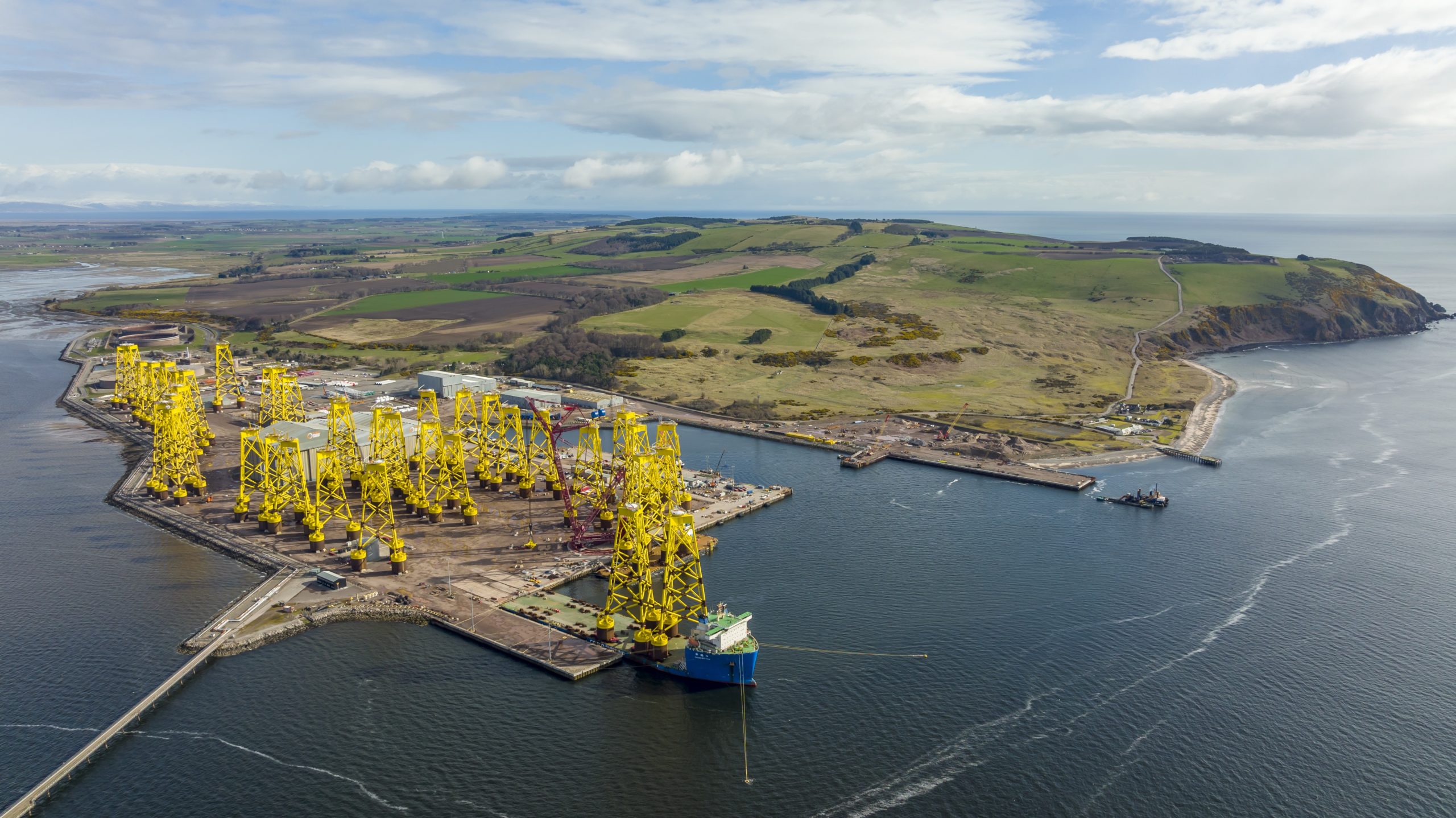An Inverness and Cromarty Firth Green Freeport would spark an employment boom that would create tens of thousands of jobs in the Highlands, Scotland and the UK over a decade, according to research by independent economic experts.
Today, Opportunity Cromarty Firth (OCF), the consortium leading a bid in the current competition for freeport status, said winning would “revolutionise” the Highland economy and stimulate major new manufacturing activity elsewhere in the country.
OCF, backed by research from leading industry bodies, argues the Cromarty Firth is the only location in Scotland able to deliver the ambitions set out in the UK Government’s Energy Security Strategy, compete with established facilities abroad and create the associated well-paid jobs and business opportunities locally and nationally.
According to an initial report by Biggar Economics, commissioned by OCF, the consortium’s proposals could be reasonably expected to add a further 20,000 jobs to those already expected in the windfarm construction phase alone.
The UK Energy Security Strategy includes a five-fold increase in offshore wind capacity by 2030, a world-leading target of 5GW of floating wind and rapid industry investment in electrifying offshore production of oil and gas to reduce emissions.
Earlier this year, Crown Estate Scotland’s ScotWind leasing round announcement signalled £26billion investment in new offshore windfarms, the majority of which are on the doorstep of the Cromarty Firth and underpin a 50-70-year pipeline of projects for the area.
International developers, Falck Renewables, BlueFloat Energy and Ørsted UK, which have secured ScotWind seabed leases, this week voiced their support for the Highland Green Freeport bid, saying they were convinced it would “build a pipeline of jobs for the benefit of Scotland and the UK.”
The drive for early deployment of offshore wind resources is simultaneously driving development of the green hydrogen economy and the region is at the heart of large-scale developments and export opportunities.
OCF say Green Freeport status would enable the establishment of a “super wind hub” assembly and production facility on the firth, which would stimulate component manufacture in Scottish and UK ports, rather than displacing activity from other areas.
The Biggar Economics report was commissioned as part of detailed preparations for OCF’s submission to the Scottish and UK governments’ bidding process, which will see two Green Freeports created in Scotland. OCF plans to publish further findings of the economic research once it is completed in the coming weeks.
Speaking on behalf of OCF, Bob Buskie, chief executive of Invergordon-based Port of Cromarty Firth (PoCF), said: “This report shows how the Highland economy will be transformed if Cromarty Firth gains Green Freeport status.
“It will also help the Firth level up and tackle a number of areas of deprivation, as well as enabling the UK to meet the local content targets set in the Offshore Wind and North Sea Transition Sector Deals.
“With a long-term pipeline of multi-billion pound infrastructure projects, it would create well-paid, sustainable job opportunities, enabling families to stay in the area, attract new talent and revolutionise the economics of the region.
“It is also an historic opportunity for the UK to build on its offshore wind experience and bolster its position as a world leader in the emerging offshore wind and green hydrogen industries.”
Roy MacGregor, Chairman of Global Energy Group, which owns The Port of Nigg on the Cromarty Firth and is a member of OCF, added: “This is one of the biggest industrial opportunities Scotland has ever had and the Highland area is at its heart.
“With the Cromarty Firth’s facilities and experience, long-established connections with industry and local content targets, Green Freeport status would enable tens of thousands of high-quality jobs to be created in this region, which has significant areas of under investment and deprivation.
“Only the Cromarty Firth can create a globally competitive hub and secure the UK’s market leading position in both floating wind and green hydrogen, delivering the jobs, skills and exportable industry which will revolutionise the economy of the Highlands and ensure the UK capitalises on the opportunities presented by floating wind.”
The port facilities at Invergordon and Nigg on the Cromarty Firth, a deep, sheltered North Sea inlet on the east coast of the Highlands, have already supported more offshore wind projects than any other Scottish ports.
The Port of Nigg is currently delivering the storage and marshalling work for Scotland’s largest and the world’s deepest fixed-bottom offshore wind farm, Seagreen, the third major offshore wind project to be delivered by Global Energy Group at the facility.
The £2.5bn, 588MW Beatrice and £2.6bn, 1GW Moray East offshore windfarms were both constructed and marshalled from the Firth, and Invergordon and Nigg supported two floating windfarms, Hywind and Kincardine. Including activity at Port of Inverness, which is part of OCF, the region has also stored and handled hundreds of onshore windfarm components.
In a joint statement issued this week Falck Renewables, BlueFloat Energy and Ørsted UK said: “Many independent and industry reports into creating a successful offshore wind industry in Scotland point to the Cromarty Firth as providing the unique blend of attributes required.
“That is why we are calling on the UK and Scottish governments to choose the Cromarty firth as one of the locations for Green Freeport status.”
The OCF consortium was launched more than two years ago, with the aim of creating a free trade zone centred on the Cromarty Firth, to help secure a sustainable long-term pipeline of energy projects and high quality jobs in the Highlands.
It is backed by more than a dozen regional businesses, and Inverness Chamber of Commerce, as well as public sector organisations, and academic bodies, including The Highland Council, the University of the Highlands and Islands (UHI).



